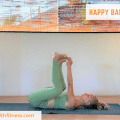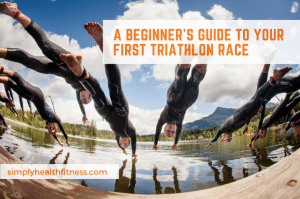
Even thinking about doing a triathlon can be daunting, thrilling and challenging all the same. The triple-endurance event, consisting of swimming, biking and running, is gaining popularity all over the world. If you’ve ever thought about dabbling in the art of doing three consecutive endurance sports in one event; look no further. This is your invitation to learn what you need to successfully complete your first triathlon.
There are various distances ranging from the (super) sprint all the way up to the infamous ironman race. If you’re a first-timer, I suggest tackling the sprint distance first. You usually have a 750m swim, 20km bike and 5k run for the normal sprint distance. While that may sound like a lot to begin with; it is a doable distance that does not require hours and hours of training.
Triathlon training plan for your first sprint
Training for a triathlon may seem overwhelming at first, but you don’t need to put in 15 or 20 hours of training a week to be able to complete it. All you really need to do is fit in 4-5 key workouts per week. A swim, a bike ride, one to two runs and a strength training session. Sounds doable? It is! As you progress, you can add in a second session for each discipline if you have the time and motivation, but it’s not a necessity in order to just be able to complete your first tri.
Swimming
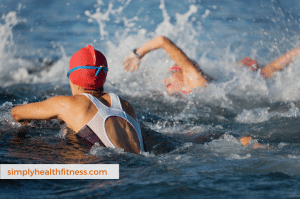
For swimming, pick up a good pair of goggles, a swim cap, and a men’s or women’s swimsuit. If you’re completely new to the sport, I recommend that you hire a swim coach to help you get started or sign up for a swim class with other beginners. Not only will it help in learning basic swimming techniques, but to get comfortable in the water in general. Also, make sure that you get into open water a couple of times before your first race. It’s just not the same as swimming in a pool and developing that level of comfort you need to have while swimming in a lake or ocean, is super important to regulate your breathing levels as well.
Cycling
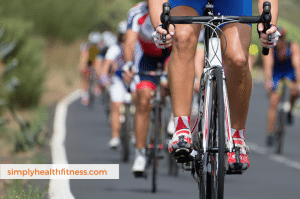
Next, you need to do a long bike ride once a week and gradually build up the duration and distance of your workout. The goal is to comfortably ride not only the distance you’re going to cover during your triathlon, but also to go well beyond that. If your first tri is a sprint (20k bike ride), you’ll want to build up to at least being able to ride 40k a week. Start with a distance that you can do and add about 7-10% of mileage each week. Once you’re comfortable riding a certain distance, build up the intensity as you get closer to your race.
Running
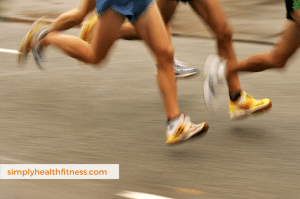
For the sprint triathlon run, you need to be able to do a 5k (3.1 miles). I do suggest getting two runs in per week since your muscles and joints need more time getting used to the high impact; as opposed to when biking or swimming. Incorporate one longer run at an easy conversational pace (take a friend with you!) and one run where you run at your race pace or faster than that.
If you can, leading up to your race, add in some brick trainings as well. Brick trainings are 2-in-1 sessions, where you run right after coming off of the bike. In the final weeks before your race, add 1-2kms of running right after your bike ride, in order to get your legs used to transitioning. Your legs may feel wobbly for the first couple of minutes, but the more specifically you train this, the easier it will feel.
Nutrition and sleep during your triathlon training
A healthy diet and high quality sleep will be your best friends and indispensable recovery tools during your training. Make sure that you fuel your body well: complex carbohydrates like sweet potatoes and whole wheat pasta, lean proteins like chicken, Greek yogurt or eggs and healthy fats, like nuts and avocados, should be the main staple of your diet. Fuel well before your workouts, and fuel smart afterwards (high protein, high carb).
Related read: Your Ideal Post-Run Nutrition Strategy
Sleep-wise, the more intense and demanding your training gets, the more sleep you need. Make sure to get 7-9 hours of uninterrupted, high quality sleep, so that you you can feel fresh to train the next day.
What kind of equipment do you need for your first tri?
Of course, for three different disciplines, you’ll want to have the right equipment, but it doesn’t have to be super expensive gear like high-end triathlon bikes. Check the guidelines for the event that you want to sign up for; some may allow you to use normal city or mountain bikes. If they don’t, you can easily rent a road bike for that one time or borrow one from a friend. Here’s a quick overview of some essentials that you’ll have to consider bringing:
- Swim: Swim cap, goggles, swimsuit or trisuit (a suit that you can wear for all three disciplines, like this one)
- Transition zones: towel, bottle with water or sports drink, fuel (like gels or drinks)
- Bike: road bike (or any bike that is permitted on the course), a helmet, sports glasses, socks, cycling clothes, tri belt bib holder
- Run: run kit (running shoes, run clothes or trisuit)
Remember that during your race, you are not allowed to bring a phone, headphones or listen to music for safety reasons. During your bike ride specifically, also be mindful to drafting. You are not allowed to draft in the vast majority of age-group races and must leave a 10-12 m gap between your opponents. If you ignore this rule, you may end up with a penalty, which could result in seconds or minutes to your final finishing time or can even get you disqualified.
Final Thoughts
Signing up for a triathlon is the first step to completing it. If you’re thinking to yourself – wow, that’s a lot of information to take in, don’t worry. You’ll get the hang of it soon enough and I promise you, you’ll have a blast. Don’t overthink it, because the more you do, the more unattainable the goal of finishing your first triathlon will seem. Do all the research you can before your competition, get that race-mode on and just enjoy!



